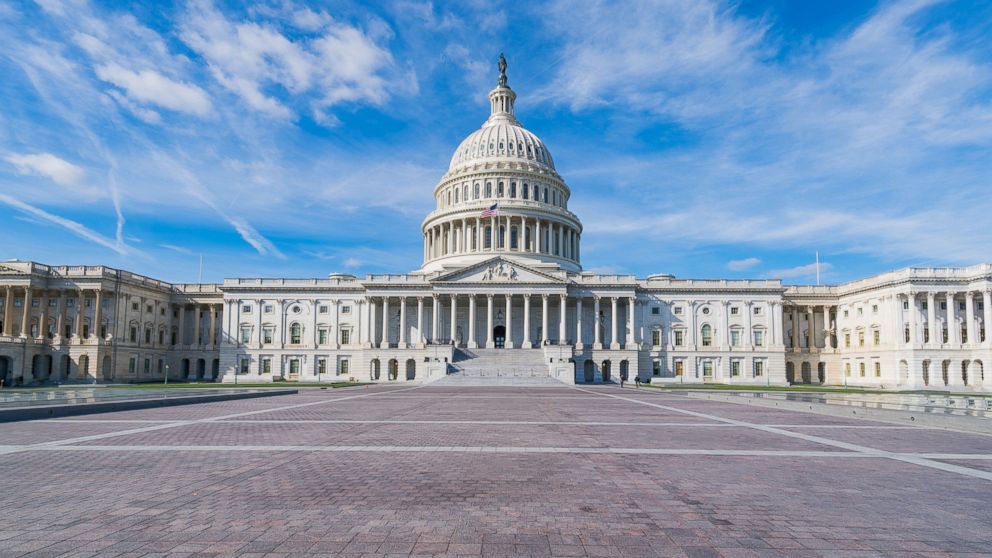Senate Confirmation Hearings: Everything to Know
— -- As President Donald Trump's Cabinet nominees continue making their way through confirmation hearings and votes, here's everything you need to know about the process:
Who Needs Senate Confirmation?
All cabinet-level officials, except the White House chief of staff, require Senate confirmation, including: the secretaries of agriculture, commerce, defense, education, energy, health and human services, homeland security, housing and urban development, interior, labor, state, transportation, treasury, and veterans affairs, as well as the attorney general, director of the Office of Management and Budget, administrator of the Environmental Protection Agency, U.S. trade representative, ambassador to the United Nations, chair of the Council of Economic Advisers and administrator of the Small Business Administration.
Hundreds of other senior posts and agency heads (1,212, to be exact) require Senate confirmation too, after background checks. Essentially, heads of agencies and a lot of deputies need to be confirmed, whereas adviser positions for the president do not. For example: CIA director, yes; national security adviser, no.
The level of Senate confirmations has created a backlog in committees on Capitol Hill and left agencies understaffed. The Washington Post reported in 2013 that when Janet Napolitano resigned as secretary of homeland security, there were 15 vacant leadership positions in that department.
When Does the President Send Appointments to the Hill?
Before a nomination may move to the Hill, the candidate must submit several forms and undergo a fair amount of vetting by the White House and FBI. What is gathered in this process (by looking at, for example, financial disclosure reports, criminal checks and questionnaires about ties to foreign governments) could be used by the president or president-elect to withdraw a nomination or present it to the Senate as evidence in hearings.
In 2004, Congress passed legislation to "encourage a president-elect to submit, for security clearance, potential nominees to high-level national security positions as soon as possible after the election," according to the Congressional Research Service. The goal was to "reduce the elapsed time between a new president's inauguration and the appointment of his or her national security team."
What Does the Confirmation Process Look Like?
1) A nomination is given to the relevant Senate committee. The Senate Judiciary Committee, for example, handles the attorney general nomination.
2) That committee can then hold hearings, vote to move the nomination straight to the Senate floor for a vote or not move on it at all (in which case, the committee effectually kills the nomination).
3) After hearings, the committee votes to report a nomination to the full Senate, requiring a simple majority. It may vote to report the nomination favorably, unfavorably or without recommendation. If a committee sits on an appointment, the full Senate may vote to invoke cloture and move the nomination along.
4) If a nomination clears committee, it moves to the Senate floor for a simple majority vote. Filibusters are not an issue here because Democrats changed Senate rules three years ago to eliminate the 60-vote threshold for most nominations. Supreme Court picks are still subject to filibuster.
Will Trump Have the Votes?
The GOP barely kept its majority in the Senate after this year's elections, and rejections of major appointments are rare. Republicans have 52 seats, but that number includes Jeff Sessions, R-Ala., who is Trump's pick for attorney general.
That raises some questions. Will Sessions vote for himself? When John Kerry was in the Senate and required confirmation as secretary of state, he voted "present."
Could some Republicans defect? Yup. Could there be a tie? Maybe. Would Republicans need to use soon-to-be Vice President Mike Pence's vote as a tie breaker? Possibly.
When Are the Hearings and Votes?
Hearings for several Cabinet picks started in January before the inauguration. Nominees were not permitted to be confirmed, however, until after the president was sworn in on Jan. 20. A number of nominees have been voted on, confirmed and sworn in. A full list of those who require Senate confirmation and their status is below.
- Attorney general: Jeff Sessions - awaiting floor vote - likely this week
- Secretary of health and human services: Tom Price - awaiting floor vote - likely this week
- Secretary of the treasury: Steve Mnuchin - awaiting floor vote
- Secretary of commerce: Wilbur Ross - awaiting floor vote
- Secretary of housing: Ben Carson - awaiting floor vote
- Secretary of the interior: Ryan Zinke - awaiting floor vote
- EPA administrator: Scott Pruitt - awaiting floor vote
- Secretary of commerce: Wilbur Ross awaiting floor vote
- Secretary of energy: Rick Perry - awaiting floor vote
- SBA administrator: Linda McMahon - awaiting floor vote
- OMB director: Mick Mulvaney - awaiting floor vote
- Secretary of veterans affairs: David Shulkin - awaiting floor vote
- Secretary of labor: Andy Puzder - initial hearing delayed, now awaiting hearing
- Secretary of agriculture: Sonny Perdue - awaiting hearing
- Director of national intelligence: Dan Coats - awaiting hearing
- U.S. trade representative: Robert Lighthizer - awaiting hearing Confirmed
- Secretary of homeland security: John Kelly
- Secretary of defense: James Mattis
- Secretary of state: Rex Tillerson
- CIA director: Mike Pompeo
- Secretary of transportation: Elaine Chao
- U.N. ambassador: Nikki Haley
- Secretary of education: Betsy DeVos




